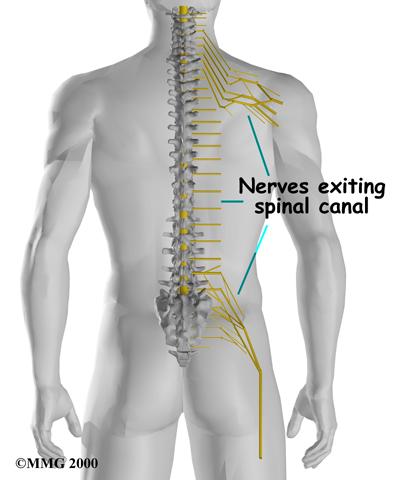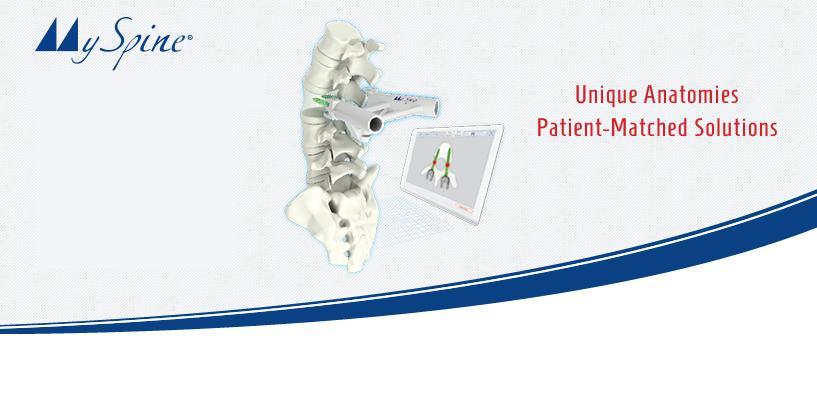 On November 25, 2014, Medacta USA, a subsidiary of Medacta International, announced that two U.S. surgeons have completed the first 3D reconstruction and 3D printing technology aided spinal surgeries. The two surgeons performing the surgeries report greater efficiency and more accuracy with these customized 3D printed tools.
On November 25, 2014, Medacta USA, a subsidiary of Medacta International, announced that two U.S. surgeons have completed the first 3D reconstruction and 3D printing technology aided spinal surgeries. The two surgeons performing the surgeries report greater efficiency and more accuracy with these customized 3D printed tools.
There is perhaps nothing more encouraging in the customizable world of 3D printing technology than its medical applications. With the recent announcement of these completed surgeries after the May 2014 FDA approval of Switzerland-based Medacta’s MySpine Patient Matched Technology , both spinal patients and their doctors should feel encouraged. Spinal surgery just got another big boost from 3D printing, and there’s hope both for those suffering from debilitating spinal conditions as well as the surgeons who perform these procedures.
The spinal cord is the main part of the body’s central nervous system. It is important because it conveys signals from the brain to the body’s nerves. In a nutshell, it controls your ability to move. This is precisely why spinal surgery is such a sensitive undertaking. A good spinal surgery can diminish pain and improve mobility, while a bad spinal surgery can increase pain and immobility. Improper spinal care can also lead to paralysis in some severe cases.
 Samuel S. Jorgenson, M.D. and Richard Manos, M.D., both of the Spine Institute of Idaho, were the first surgeons to use MySpine. Dr. Jorgenson stated: “The MySpine customized placement guides offer a welcome new approach to dealing with the nuances and complexities of a patient’s spinal anatomy.” Dr. Manos further explained: “The customized pre-operative process provides a high level of precision and accuracy. This cuts down on the overall time of the procedure, and will help us deliver more efficient care to the multiple patients we see each day with challenging spinal cases.”
Samuel S. Jorgenson, M.D. and Richard Manos, M.D., both of the Spine Institute of Idaho, were the first surgeons to use MySpine. Dr. Jorgenson stated: “The MySpine customized placement guides offer a welcome new approach to dealing with the nuances and complexities of a patient’s spinal anatomy.” Dr. Manos further explained: “The customized pre-operative process provides a high level of precision and accuracy. This cuts down on the overall time of the procedure, and will help us deliver more efficient care to the multiple patients we see each day with challenging spinal cases.”
While Medacta’s first foray into 3D printing technology was in the widely used MyKnee product line, the key to their latest medical innovations isn’t actually a key–it’s a screw. The pedicle screw, used to support deformed spines, is the most commonly used tool which is also notoriously difficult during surgical placement. Good news: 3D printing technology is facilitating better placement of these common spinal screws. In a clinical study using MySpine, which is paired with Medacta’s M.U.S.T. pedicle screw system, no clinical complaints were reported about the 76 implanted screws.
![medacta_usa_grande[1]](https://3dprint.com/wp-content/uploads/2014/11/medacta_usa_grande1.jpg) How does MySpine work? MySpine Screw Placement Guides are made for a specific patient’s body. They are 3D fabricated medical devices used to help position pedicle screws in the spine. The guides involve surgical planning software assisting surgical placement of pedicle screws designed specifically for a patient unique anatomy. It is essentially a 3D printed surgical tool that fits the patient it is used on.
How does MySpine work? MySpine Screw Placement Guides are made for a specific patient’s body. They are 3D fabricated medical devices used to help position pedicle screws in the spine. The guides involve surgical planning software assisting surgical placement of pedicle screws designed specifically for a patient unique anatomy. It is essentially a 3D printed surgical tool that fits the patient it is used on.
It is easy to see how these new customizable tools can greatly improve spinal surgery outcomes. Perhaps this is why the 3D printed MySpine was recently recognized as the Best New Technology in Spinal Care in 2014 by the publication Orthopedics This Week. These enhanced tools promise to improve patient satisfaction and physician performance, using the “tailor-made patient-specific guides for the spine vertebrae utilizing proprietary CT scan algorithms and sophisticated 3-D medical printing technology. ”
We have seen the use of 3D printed guides created for other surgeries in the past, and we will surely see more in the future. What do you think about these latest developments? Discuss in the Medacta USA forum thread on 3DPB.com.
Subscribe to Our Email Newsletter
Stay up-to-date on all the latest news from the 3D printing industry and receive information and offers from third party vendors.
You May Also Like
3D Printing Unpeeled: New Arkema Material for HP, Saddle and Macro MEMS
A new Arkema material for MJF is said to reduce costs per part by up to 25% and have an 85% reusability ratio. HP 3D HR PA 12 S has been...
3D Printing News Briefs, January 20, 2024: FDM, LPBF, Underwater 3D Printer, Racing, & More
We’re starting off with a process certification in today’s 3D Printing News Briefs, and then moving on to research about solute trapping, laser powder bed fusion, and then moving on...
3D Printing Webinar and Event Roundup: December 3, 2023
We’ve got plenty of events and webinars coming up for you this week! Quickparts is having a Manufacturing Roadshow, America Makes is holding a Member Town Hall, Stratafest makes two...
Formnext 2023 Day Three: Slam Dunk
I’m high—high on trade show. I’ve met numerous new faces and reconnected with old friends, creating an absolutely wonderful atmosphere. The excitement is palpable over several emerging developments. The high...
































